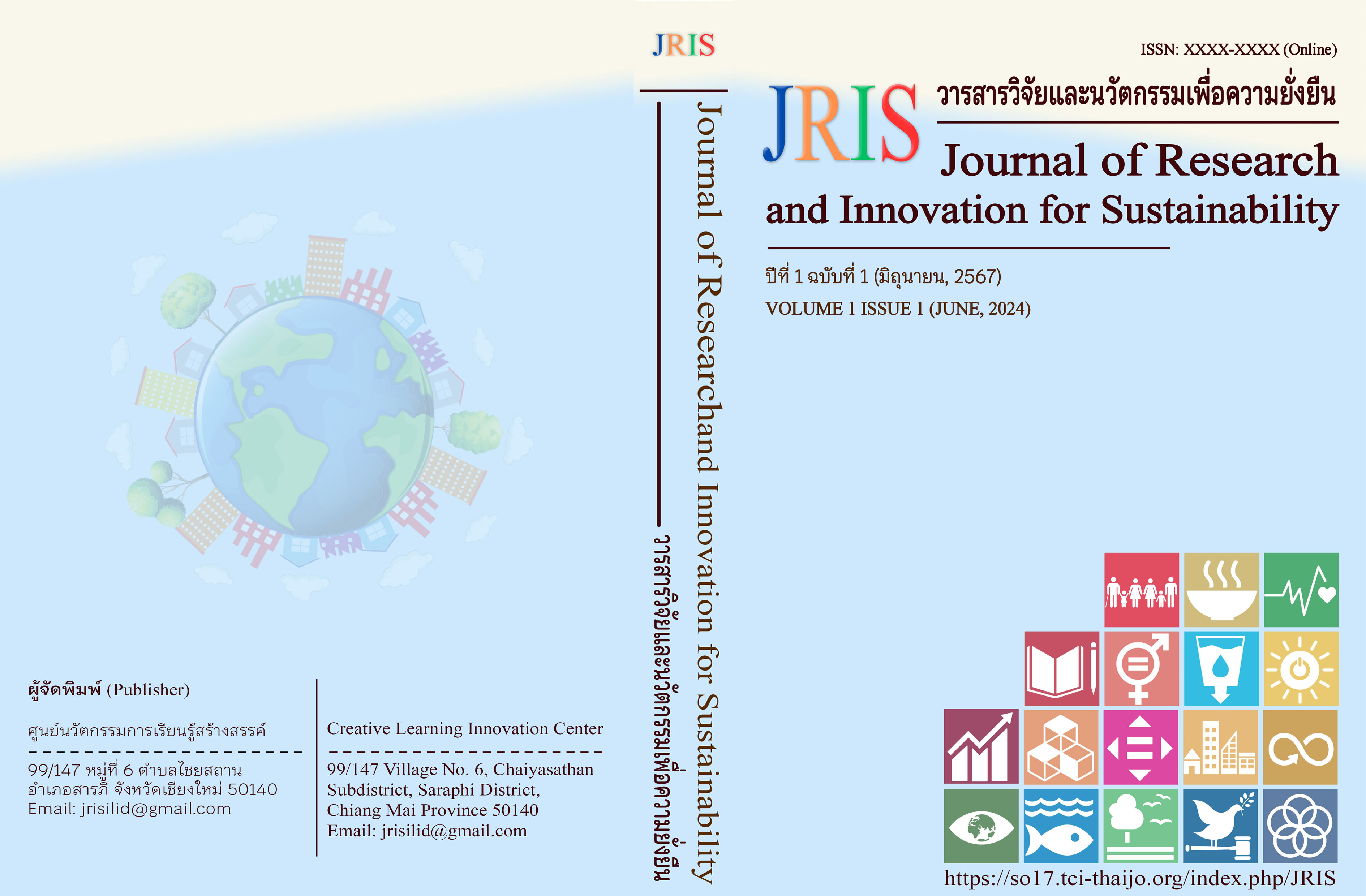THE STRATEGIES FOR USING LANGUAGE IN THE POETRY “RERAI LAILA” BY SAKSIRI MEESOMSUEB
Main Article Content
Abstract
The objective of this research article aimed to study the using of words and figure of speech that appeared in the strategies for using language in terms of words and the use of figure of speech in the poetry "Rerai Laila " by Saksiri Meesomsueb. The researcher used document research methods and present the information in
a descriptive and analytical manner. The research results found that:
The using of words that appeared in "Rerai Laila" by Saksiri Meesomsueb were found 12 types of words, as follows: Foreign Words, Honor Words, Colloquial Words, Onomatopoeia Words, Abstract Words, Connotation Words, Concrete Words, Dialect Words, Emotion Words, Vulgar Words, Technical Terms, Spoken Imitation Words. The most common was foreign words, followed by Honor Words, respectively.
The using of figure of speech that appeared in “Rerai Laila” by Saksiri Meesombueb, by using the criteria of Praphon Ruengnarong, the use of 7 types
of figures of speech were found as follows: Onomatopoeia, Hyperbole, Simile, Personification, Paradox, Rhetorical Question and Symbol. The most common was Onomatopoeia, followed by Hyperbole respectively.
Article Details

This work is licensed under a Creative Commons Attribution-NonCommercial-NoDerivatives 4.0 International License.
Copyright License
Permission is granted to use text, content, images, or any other material from the publication for anyone who wishes to read, download, copy, distribute, print, search, or link to the full text of the article, compile data for indexing, transfer data to software, or use for any other legal purposes, provided that it is not used for commercial purposes or for business benefit. All articles published in the Journal of Research and Innovation for Sustainability are distributed under a Creative Commons Attribution-NonCommercial-NoDerivatives 4.0 International License: https://creativecommons.org/licenses/by-nc-nd/4.0/
References
กาญจนา ปราบปัญจะ. (2553). การศึกษาการใช้ภาษา และกลวิธีในการเขียน ของ ว.วชิรเมธี [วิทยานิพนธ์ปริญญาศิลปศาสตรมหาบัณฑิต]. มหาวิทยาลัยศรีนครินทรวิโรฒ.
ชมัยภร บางคมบาง และคณะ (บรรณาธิการ). (2562). อ่านสร้างสุข 26: 1,009 เล่ม วรรณกรรมเกื้อกูลโลก เกื้อกูลมนุษย์ เล่มที่ 1. สำนักงานกองทุนสนับสนุน การสร้างเสริมสุขภาพ (สสส.).
ชาตบุษย์ นฤดม. (2550). โวหารภาพพจน์ในวรรณกรรมซีไรต์ที่สื่อสะท้อนสภาพการเมืองไทย [วิทยานิพนธ์ปริญญาศิลปศาสตรมหาบัณฑิต]. มหาวิทยาลัยเกษตรศาสตร์.
ชำนาญ รอดเหตุภัย. (2550). การวิจัยทางการศึกษา. สำนักพิมพ์แห่งจุฬาลงกรณ์มหาวิทยาลัย.
ไชยวัฒน์ ไชยสุข. (2558). กลวิธีการใช้ภาษาและภาพสะท้อนในวรรณกรรมบันเทิงคดีของมงกุฎ อรดี [วิทยานิพนธ์ปริญญาศิลปศาสตรมหาบัณฑิต]. มหาวิทยาลัยเกษตรศาสตร์.
ประพนธ์ เรืองณรงค์. (2545). ภูมิปัญญาทางภาษา. ไทยวัฒนาพานิช.
ปรีดาพร คุ้มสระพรม. (2555). การใช้ภาษาวรรณศิลป์และเนื้อหาในบทกวีนิพนธ์ แนวเพื่อชีวิตของ เนาวรัตน์ พงษ์ไพบูลย์ [วิทยานิพนธ์ปริญญาศิลปศาสตรมหาบัณฑิต]. มหาวิทยาลัยเกษตรศาสตร์.
ราชบัณฑิตยสถาน. (2556). พจนานุกรมฉบับราชบัณฑิตยสถาน พ.ศ. 2554 (พิมพ์ครั้งที่ 2). นานมีบุ๊คส์พับลิเคชั่นส์
ศักดิ์สิริ มีสมสืบ. (2556). เรไร ไลลา (พิมพ์ครั้งที่ 2). ปะ-กัน-นะ.
สำนักพิมพ์สมมติ. (2563). ศักดิ์สิริ มีสมสืบ (Saksiri Meesomsueb). สำนักพิมพ์สมมติ. https://www.sm-thaipublishing.com
สำนักวิชาการและมาตรฐานการศึกษา. (2557). คู่มือการจัดกิจกรรมหนังสืออ่านนอกเวลา. สกสค. ลาดพร้าว.
อิงอร สุพันธุ์วณิช. (2558). วรรณกรรมวิจารณ์. โครงการเผยแพร่ผลงานวิชาการ คณะอักษรศาสตร์ จุฬาลงกรณ์มหาวิทยาลัย.

